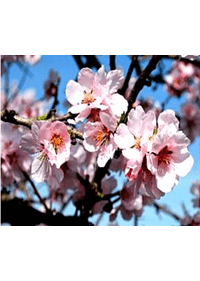PHYTOCHEMICAL SCREENING AND THIN LAYER CHROMATOGRAPHIC OF PRUNUS DULCIS (ALMOND) MEDICINAL PLANT LEAVES USED IN FOLK MEDICINE FOR TREATMENT OF WOUNDS AND BURNS IN HUFASH DISTRICT AL MAHWEET GOVERNORATE–YEMEN
Keywords:
Antimicrobial, antioxidative, phytochemical, Prunus dulcisAbstract
Objective: Prunus dulcis (Almond) belongs to the family Rosaceae and is rich in polyphenols, including hydroxybenzoic acids and aldehydes, flavonol and flavanone aglycones, and glycosides. The objective of current study was phytochemical screening of chemical constituents of Prunus dulcis extract. Methods: In this study methanolic and aqueous extracts of one plant namely Prunus dulcis were screened for the presence of phytochemical constituents and tested for their antimicrobial and antioxidant activity. The qualitative phytochemical analysis revealed the results showed presence of alkaloids, terpenoids, glycosides, resins, saponins, tannins, flavonoids, phenols, and amino acid were present in the methanol extract, with absence of glycosides, and amino acids in the aqueous extracts in leaves plant. Results: TLC tests conducted revealed Rf values in the leaves for alkaloids, flavonoids, tannins, phenols and saponins(0.92-0.96-0.96-0.95-0.96) respectively. The antimicrobial activity extracts against four bacterial isolates Staphylococcus aureus, Escherichia coli , Pseudomonas aeruginosa and Klebsiella sp. and a single fungal isolate Candida albicans with concentrations (0.5 mg/ml, and 1,0 mg/ml) of the extract were added to the disc and respective solvent was used as negative control. The antioxidative activity of leaf was evaluated by using 1,1- diphenyl-2 picrylhydrazyl (DPPH), the results showed are 85.5%, lowest from standard, ascorbic acid 87.5%. Conclusion: The present study showed that prunus dulcis are rich sources of useful secondary metabolites, suitable for use for medicinal purpose like treat wounds and burns diseases. Peer Review History:
Peer Review History:
Received 8 February 2019; Revised 15 March; Accepted 29 April; Available online 15 May 2019
Academic Editor: Dr. Marwa A. A. Fayed , University of Sadat City, Egypt, maafayed@gmail.com
, University of Sadat City, Egypt, maafayed@gmail.com
Reviewer(s) detail:
Dr. Rana Ahmed MohamedEl-Saied El-Fitiany , Ahram Canadian University, Giza, Egypt, marmarelfitiany@gmail.com
, Ahram Canadian University, Giza, Egypt, marmarelfitiany@gmail.com
Dr. Mohamed Said Fathy Al-Refaey , University of Sadat City, Menofia, Egypt, Mohamed.said@fop.usc.edu.eg
, University of Sadat City, Menofia, Egypt, Mohamed.said@fop.usc.edu.eg
Downloads

Published
How to Cite
Issue
Section

This work is licensed under a Creative Commons Attribution-NonCommercial 4.0 International License.









 .
.